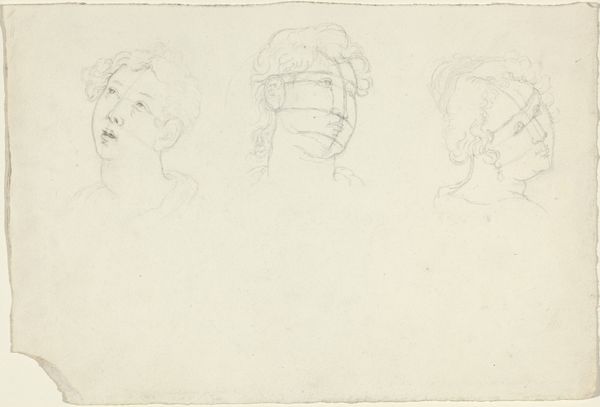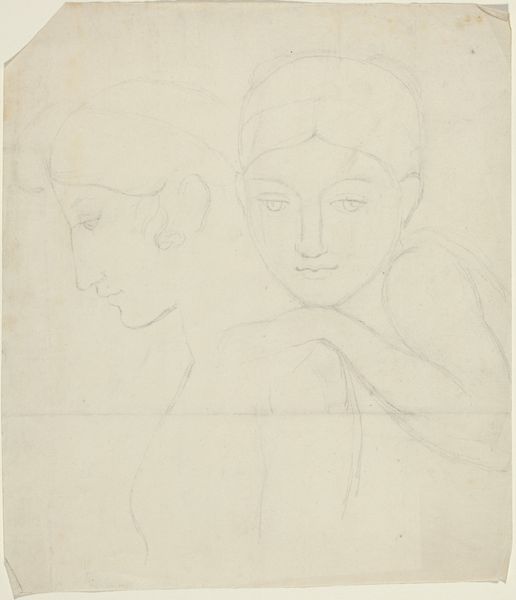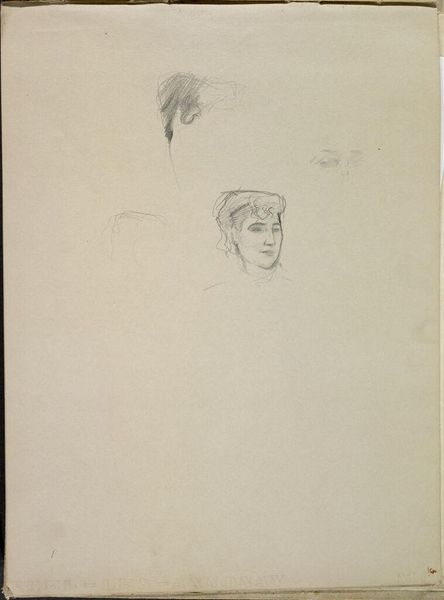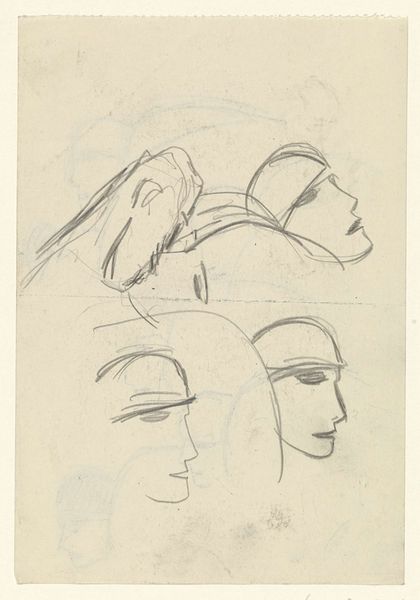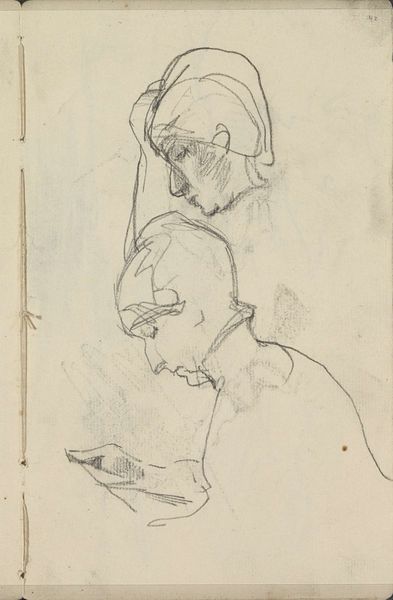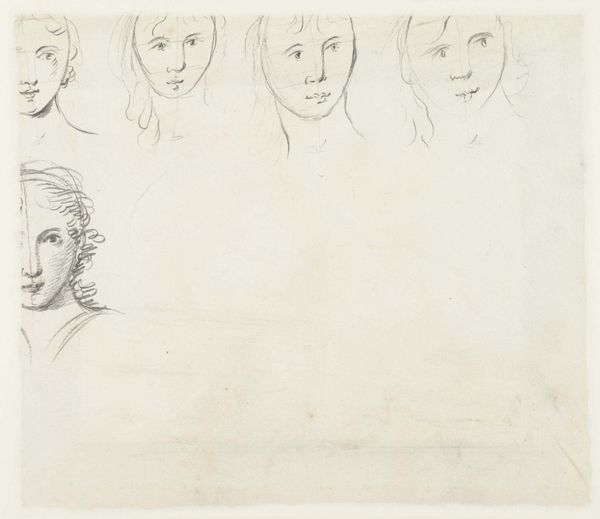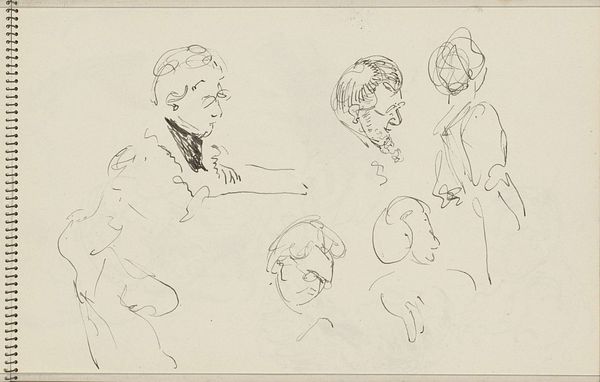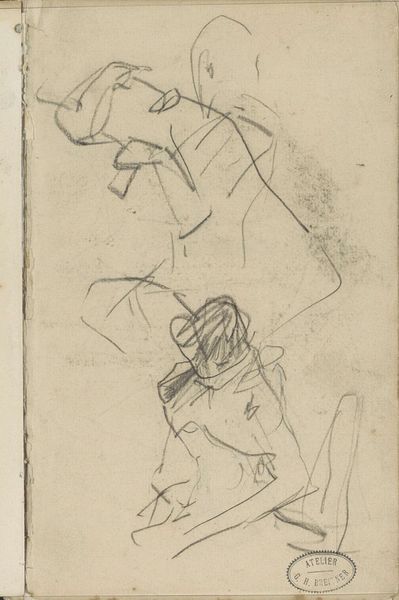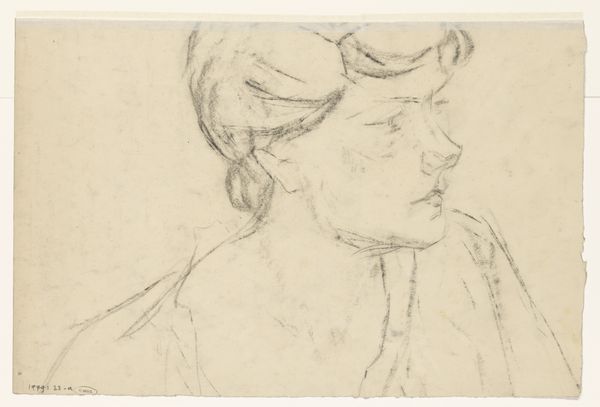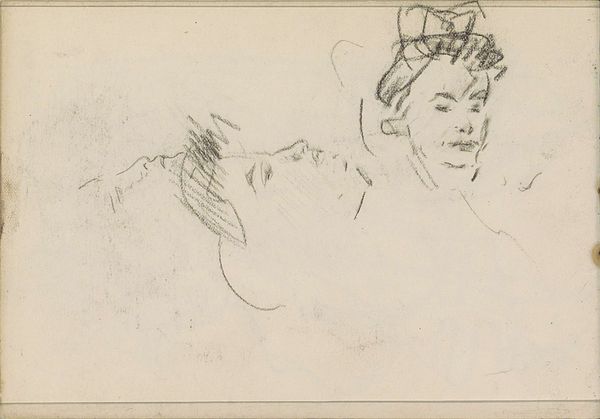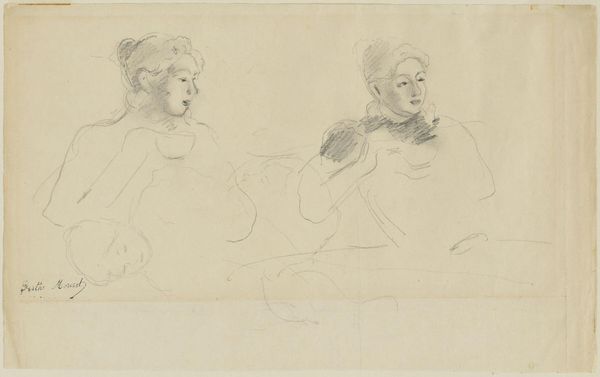
drawing, pencil
#
portrait
#
drawing
#
comic strip sketch
#
imaginative character sketch
#
light pencil work
#
figuration
#
personal sketchbook
#
idea generation sketch
#
sketchwork
#
character sketch
#
sketch
#
pencil
#
sketchbook drawing
#
storyboard and sketchbook work
#
realism
#
initial sketch
Copyright: Rijks Museum: Open Domain
Curator: What a beautifully understated study. This is Johan Antonie de Jonge's "Studieblad met vrouwenhoofden," a sheet of studies depicting women's heads, dating from around 1920. It’s rendered in light pencil. Editor: Immediately, there's a lightness, an ephemeral quality. The lack of strong line work gives it a dreamlike, almost melancholic air. Notice how the negative space is as important as the marks themselves. Curator: I find the juxtaposition intriguing. We have one figure in profile, elegant, wearing what appears to be a hat—a symbol of societal role. The other is frontal, perhaps more vulnerable, without adornment. Are they facets of the same woman, or separate explorations of feminine identity? Editor: The profile is classic, almost like a cameo. But the face viewed from the front, its asymmetry... it’s far more modern. The difference in perspective, one so formal, the other so unguarded, is stark. It suggests different ways of seeing, different modes of being. Curator: Perhaps de Jonge was grappling with shifting ideals of womanhood in the early 20th century? The profile hints at the traditional, while the frontal view seems to suggest a more introspective, individualized spirit emerging. It might reveal psychological tension, that sense of in-betweenness... Editor: Interesting. I’m more struck by the formal relationships—the balance of light and dark, the implied volumes achieved with so few strokes. It's a lesson in economy of means. Also, the almost clinical detachment. There is nothing inherently emotional in its appearance. Curator: Yet detachment, in itself, is evocative. Think of the Dutch Masters, rendering their subjects with precision. Here, de Jonge’s coolness might serve to universalize the female experience, to depict archetypes rather than portraits of actual women, tapping into centuries of representation. Editor: I see it as a formal exercise, executed with notable skill and restraint, exploring shape and shadow. The contrast alone renders it conceptually thought provoking. Curator: Whether de Jonge intended societal critique or formal exploration, this sheet of studies provides rich territory for contemplation. It connects to long traditions of representation in art, inviting to appreciate the interplay of realism, psychological inquiry, and formal invention. Editor: Absolutely, a great example of an artist using fundamental elements to generate visual meaning and, regardless of his aim, sparking conversation across decades.
Comments
No comments
Be the first to comment and join the conversation on the ultimate creative platform.
